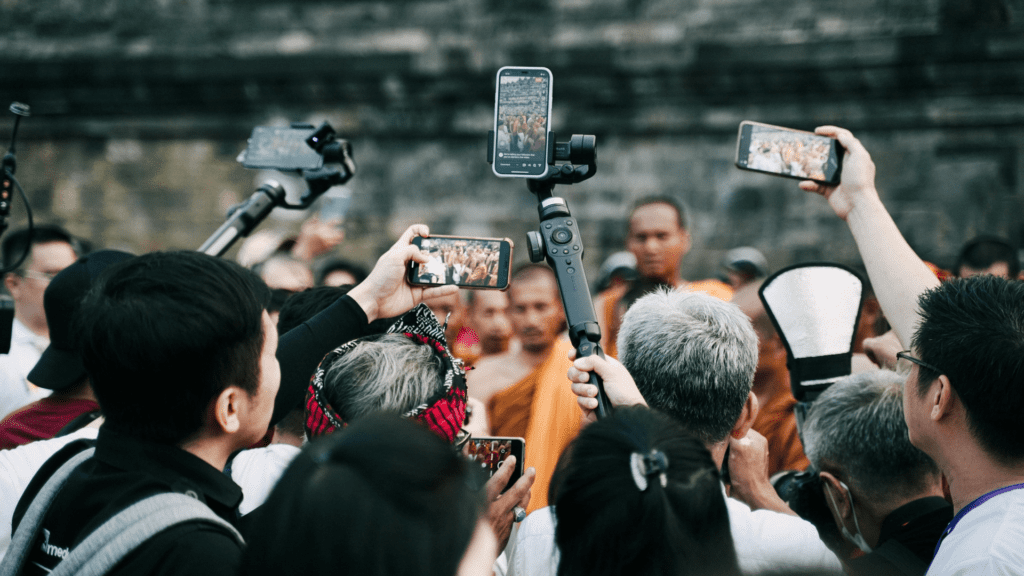With rapid advancements in technology, journalists worldwide are switching from traditional heavy cameras to smartphones for their reporting needs. Mobile journalism (Mojo) is no longer just a trend; it has become an essential part of the industry. Leading national and international media houses are embracing this shift, recognizing the convenience and efficiency that smartphones offer.

Given this transition, smartphone manufacturers must acknowledge the specific needs of journalists and tailor devices accordingly. But what exactly do journalists prioritize when choosing a smartphone?
Here’s a breakdown of the key features journalists look for before making a purchase.
1. Camera Quality – The Top Priority
For journalists, camera quality is the most critical factor. A smartphone must be capable of producing high-quality, stable, and noise-free videos. Full HD at 60fps is the preferred video format, followed closely by 4K at 30fps. In addition, journalists need:
- Excellent optical and electronic stabilization to minimize shaky footage.
- Flicker-free recording under artificial lighting conditions.
- High dynamic range (HDR) for clear visuals in both bright and low-light settings.
- Reliable autofocus to ensure crisp shots, especially in fast-moving environments.
In breaking news scenarios, a journalist may not have the luxury of setting up professional gear. A powerful smartphone camera ensures they can capture footage instantly with broadcast-quality results.
2. Battery Life – Powering a Journalist’s Day
A journalist’s workday is unpredictable, often involving long hours in the field without access to charging points. While power banks are an option, carrying extra equipment can be cumbersome. That’s why journalists demand:
- A battery that lasts at least a full working day.
- A minimum of 7-8 hours of screen-on time, even after capturing and editing multiple video stories.
- Fast-charging capabilities for quick top-ups between assignments.
Even a phone with a 6000mAh battery struggles under the strain of continuous video recording, editing, and live streaming. A smartphone with optimized power efficiency can make a significant difference.
3. Storage – Space for Uninterrupted Reporting
Journalists continuously record videos, capture images, and download essential apps. With high-resolution video files taking up substantial space, storage is a key consideration. The ideal smartphone for journalists should offer:
- A minimum of 256GB internal storage (preferred by most journalists).
- Expandable storage options for added flexibility.
- Fast UFS storage for quick file transfers and smooth performance.
Since many journalists work on tight budgets, investing in external hard drives or cloud storage may not always be feasible. A phone with ample internal storage ensures they don’t have to worry about running out of space while covering important stories.
4. Processor & RAM – Smooth Performance for On-the-Go Editing
In today’s fast-paced digital media landscape, journalists often edit and publish their stories directly from their phones. Video editing apps like Adobe Premiere Rush, Kinemaster, and Filmora demand a powerful processor and sufficient RAM. To ensure smooth multitasking and rendering speeds, a journalist’s smartphone should have:
- A high-performance chipset (preferably a flagship or upper-midrange processor).
- At least 8GB RAM for efficient video editing and smooth app performance.
- A dedicated GPU for handling intensive tasks like color correction and transitions.
A laggy phone can be a nightmare, especially when editing on tight deadlines. A well-optimized smartphone ensures that journalists can quickly edit and upload their work without any frustrating delays.
5. Pricing – Not a Major Concern
Unlike general consumers, journalists often prioritize functionality over price. It’s common to see reporters with modest salaries investing in premium smartphones through monthly installment plans. Many journalists earning as little as ₹15,000 a month still opt for flagship devices costing ₹1.2-₹1.3 lakh, paying ₹5,000-₹6,000 in monthly EMIs.
This demonstrates that price is the least significant factor when choosing a phone. If a smartphone meets the essential criteria—excellent camera, long battery life, ample storage, and smooth performance—journalists are willing to invest in it, even if it means stretching their budget.
Conclusion – The Need for Journalist-Centric Smartphones
As mobile journalism continues to evolve, smartphone manufacturers must recognize the unique demands of journalists. While current flagship smartphones meet many of these needs, a device specifically designed for journalists could revolutionize the industry. Features like built-in ND filters, pro-grade microphones, and AI-enhanced stabilization would further enhance the mobile journalism experience.
The future of journalism is mobile, and the right smartphone can empower journalists to report faster, more efficiently, and with greater impact. As journalists continue to adapt, it’s time for smartphone brands to step up and create devices that cater specifically to this profession.
About the author: The author has close to 4 years experience in multimedia journalism and covers areas including politics, society, technology, business, among others. He is currently with a regional publication where he publishes digital stories and drives growth on the digital platforms of the publication. He also contributes stories in print. A post graduate in journalism, he takes keen interest in photography.
Disclaimer: The guest contribution purely reflects opinions of the author. Techarc may or may not agree to these individual views.





